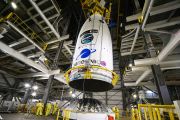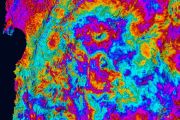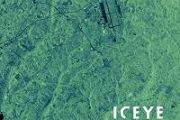
Copernical Team
Skykraft to begin launch of space-based air traffic management constellation
 Skykraft will launch a 300kg satellite on SpaceX's upcoming Transporter-5 mission according to a recently signed launch contract. The 300kg satellite is a carrier for multiple early-phase Skykraft Air Traffic Management satellites that will form a global constellation of 210 satellites.
Skykraft is building a Space-based Air Traffic Management constellation to improve the safety and effici
Skykraft will launch a 300kg satellite on SpaceX's upcoming Transporter-5 mission according to a recently signed launch contract. The 300kg satellite is a carrier for multiple early-phase Skykraft Air Traffic Management satellites that will form a global constellation of 210 satellites.
Skykraft is building a Space-based Air Traffic Management constellation to improve the safety and effici Northrop Grumman completes CDR for Next-Gen OPIR missile warning mission payload
 Northrop Grumman and Ball Aerospace successfully completed the Critical Design Review (CDR) for the Next-Generation Overhead Persistent Infrared (Next-Gen OPIR) Geosynchronous (GEO) mission payload. The completion of the Next-Gen OPIR subsystems and payload CDR meets aggressive U.S. Space Force and Lockheed Martin program objectives to ensure national security posture stays ahead of emerging glo
Northrop Grumman and Ball Aerospace successfully completed the Critical Design Review (CDR) for the Next-Generation Overhead Persistent Infrared (Next-Gen OPIR) Geosynchronous (GEO) mission payload. The completion of the Next-Gen OPIR subsystems and payload CDR meets aggressive U.S. Space Force and Lockheed Martin program objectives to ensure national security posture stays ahead of emerging glo Tissue engineering in space could treat age-related muscle loss on Earth
 An investigation headed for the International Space Station (ISS) on Northrop Grumman's upcoming 16th Commercial Resupply Services (CRS) mission could someday enable rapid advancements in treatments for age-related muscle loss.
In an experiment funded by the U.S. National Science Foundation (NSF), researchers from the Palo Alto Veterans Institute for Research and Stanford University are le
An investigation headed for the International Space Station (ISS) on Northrop Grumman's upcoming 16th Commercial Resupply Services (CRS) mission could someday enable rapid advancements in treatments for age-related muscle loss.
In an experiment funded by the U.S. National Science Foundation (NSF), researchers from the Palo Alto Veterans Institute for Research and Stanford University are le Advanced Space passes preparatory test for pathfinder mission to the moon
 Advanced Space LLC., a leading commercial space solutions company, is overseeing the Cislunar Autonomous Positioning System Technology Operations and Navigation Experiment, or CAPSTONE, a NASA-supported mission to orbit the Moon. CAPSTONE is a small satellite, or CubeSat, that will be the first spacecraft to test a unique, elliptical lunar orbit that will support NASA's Moon missions under Artem
Advanced Space LLC., a leading commercial space solutions company, is overseeing the Cislunar Autonomous Positioning System Technology Operations and Navigation Experiment, or CAPSTONE, a NASA-supported mission to orbit the Moon. CAPSTONE is a small satellite, or CubeSat, that will be the first spacecraft to test a unique, elliptical lunar orbit that will support NASA's Moon missions under Artem Is Curiosity exploring surface sediments or lake deposits
 In 2012, NASA landed the rover Curiosity in the Gale crater on Mars because the crater was thought by many scientists to be the site of an ancient lake on Mars more than 3 billion years ago. Since that time, the rover has been driving along, carrying out geological analyses with its suite of instruments for over 3,190 sols (martian days, equivalent to 3278 earth days). After analysing the data,
In 2012, NASA landed the rover Curiosity in the Gale crater on Mars because the crater was thought by many scientists to be the site of an ancient lake on Mars more than 3 billion years ago. Since that time, the rover has been driving along, carrying out geological analyses with its suite of instruments for over 3,190 sols (martian days, equivalent to 3278 earth days). After analysing the data, Perfect for the Perseid Meteor Shower
 The Perseid meteor shower, a celestial event beloved by millions of skywatchers around the world, is about to make its annual return to the night sky. The shower is predicted to reach its peak before dawn on Thursday, August 12th, though the display could put on a fine show for a night or two before and after. Late on the night of August 11-12, you might see a Perseid every minute or so. This ye
The Perseid meteor shower, a celestial event beloved by millions of skywatchers around the world, is about to make its annual return to the night sky. The shower is predicted to reach its peak before dawn on Thursday, August 12th, though the display could put on a fine show for a night or two before and after. Late on the night of August 11-12, you might see a Perseid every minute or so. This ye Northrop Grumman set to launch 16th cargo delivery mission to ISS
 Northrop Grumman is set to launch the company's 16th resupply mission (NG-16) to the International Space Station under NASA's Commercial Resupply Services-2 (CRS-2) contract. For the NG-16 mission, the Cygnus spacecraft will launch aboard the company's Antares rocket, carrying approximately 8,200 pounds of supplies, equipment and experiments for the astronauts aboard the station-the company's la
Northrop Grumman is set to launch the company's 16th resupply mission (NG-16) to the International Space Station under NASA's Commercial Resupply Services-2 (CRS-2) contract. For the NG-16 mission, the Cygnus spacecraft will launch aboard the company's Antares rocket, carrying approximately 8,200 pounds of supplies, equipment and experiments for the astronauts aboard the station-the company's la Living Planet Symposium 2022: Call for proposals

ESA is now accepting proposals for sessions at the next Living Planet Symposium – set to take place on 23–27 May 2022 at the World Conference Center in Bonn, Germany.
NASA Invites Media to New OSIRIS-REx, Asteroid Bennu Study Briefing
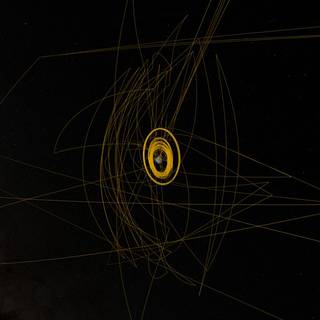 NASA will host a media teleconference at 1 p.m. EDT Wednesday, Aug. 11, to discuss an important finding from NASA’s Origins, Spectral Interpretation, Resource Identification, Security-Regolith Explorer (OSIRIS-REx) spacecraft.
NASA will host a media teleconference at 1 p.m. EDT Wednesday, Aug. 11, to discuss an important finding from NASA’s Origins, Spectral Interpretation, Resource Identification, Security-Regolith Explorer (OSIRIS-REx) spacecraft. Image: Crater trio
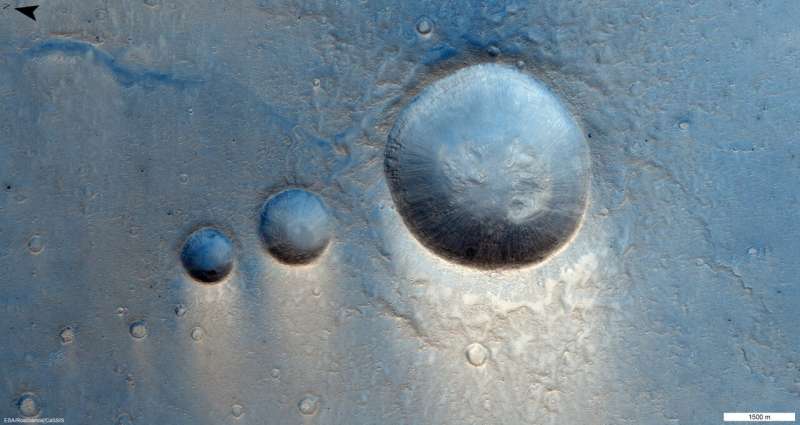
This image was taken on 22 March 2021 in the Lunae Planum region [16.74°N, 300.9°E] of Mars by the CaSSIS camera on the ESA-Roscosmos ExoMars Trace Gas Orbiter (TGO).
This region is known to be covered by large lava deposits probably from the nearby Tharsis Montes volcanoes. In this image three medium-sized impact craters take center stage, with many smaller impacts pockmarking the scene. Zooming into the larger craters it is possible to see layers in the inner rim that could represent the successive accumulation of lava flows in this area.
TGO's full science mission began in 2018. The spacecraft is not only returning spectacular images, but also providing the best ever inventory of the planet's atmospheric gases, and mapping the planet's surface for water-rich locations. It will also provide data relay services for the second ExoMars mission comprising the Rosalind Franklin rover and Kazachok platform, when it arrives on Mars in 2023.
Explore further
























